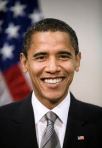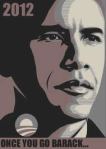The Democrats are rolling out a new website called “protecting the vote.” This will be a comprehensive effort to educate voters about their rights and the new law enacted by the different states impacting voting.
There are now 29 Republican governors in the United States in 2011, and this gives the Republican Party an advantage in changing and creating laws. The major goal in the 2012 election for the Republican Party is to make President Obama a one term president. The Republican governors and legislators are using the legal system to restrict or limit voter’s ability to cast their ballots.
The Republicans are claiming that in 2008, there was major voter fraud and it is necessary to prevent this practice with tougher voter regulations. In 30 states across the country, Republican governors have enacted strict photo ID requirements, and reduced the availability of early voting. They are also making it harder to register new voters, and challenge the citizenship of eligible voters.
There is a full-scale attack on the right to vote, and millions of ex-offenders across the country are finding that their civil rights are not being restored, keeping them from voting. In the 2008 presidential election there were more citizens voting in the history of the country. There were 62% of all eligible voters voting, and that was the highest turnout rate in the past century.
The electorate was the most demographically diverse in United States’ history of voting. The great expansion of voters was in the increase of young voters, Hispanics, African-Americans, and Asian-Americans, which signaled the importance of the Voting Rights laws. America was moving toward a more democratic country, where more Americans were included in the political process.
In 2008, nearly 40 million Americans cast ballots early or through the absentee voting process. Over 1 million voters registered on Election Day, and Americans from groups traditionally underrepresented at the ballot box participated in record numbers. The 2008 electorate was the largest and most racially and ethnically diverse in the history of the United States.
But in the last three years the Republicans are trying to turn back the hands of the clock. The Republicans have strategically decided to organize a movement to make voting more restrictive. They have researched and studied the profile of a Democrat and President Obama supporter, and their goal is to suppress the vote.
The Republicans are aware that they have a better chance of beating President Obama if there are less eligible Democratic voters. Winning an election is a numbers game, and beating President Obama will be determined by which party has the most voters at the polls.
In the coming months, the Republicans will come up with new ideas to further their movement to restrict and suppress voting rights. By restricting different stages of the voting process, each measure is designed to cut eligible voters from the electorate. Each new suppression or restrictive law narrows the American electorate, and benefits the Republican candidate.
The progress in the last presidential election can be reversed if the Democrats are not vigilant in protecting the right to vote. It is important to be informed with the new voting rights laws in your state, and continue to register new voters. President Obama is on the threshold to win his second term in office.
Legally, it is important to challenge illegal laws and tricks, when it comes to voting rights. If Democrats do not mobilize, organize, and get more citizens registered to vote, we will be defeated in 2012. The power of the vote is in our hands, and we have the opportunity to win.
























